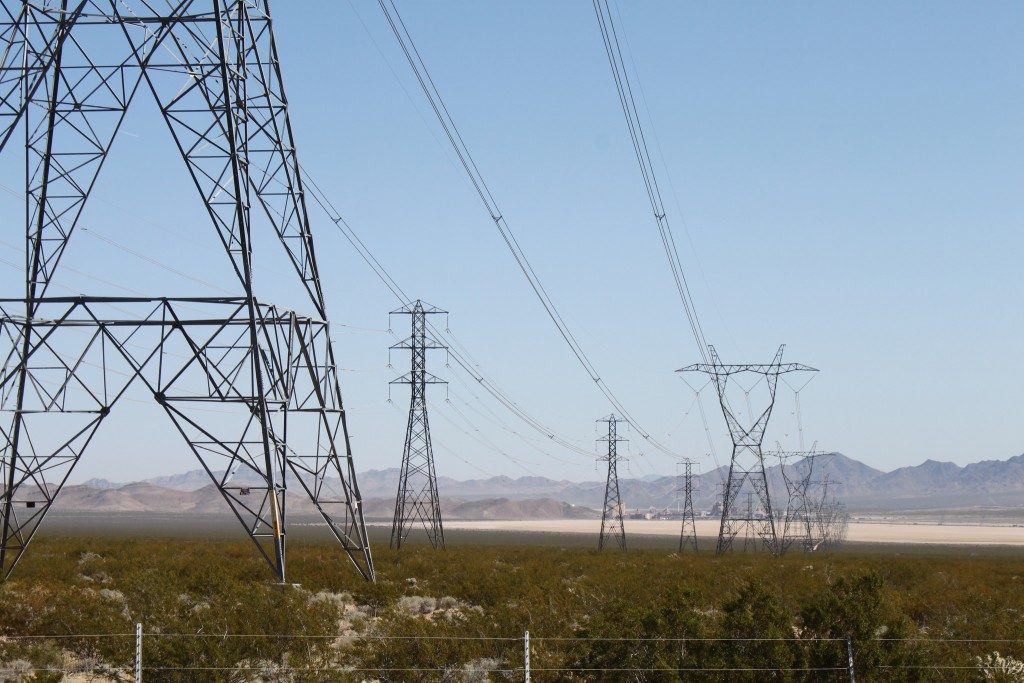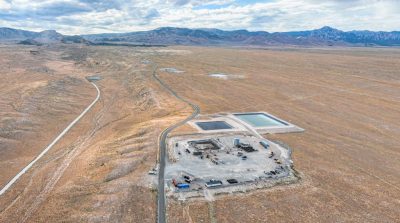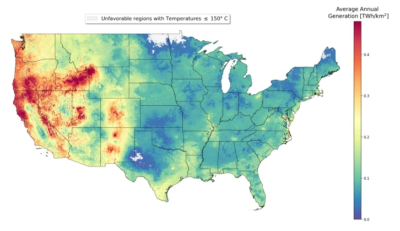Con extensos recursos en San Emidio, U.S. Geothermal busca diferentes opciones de interconexión.
Con una capacidad de producción de energía más alta que la esperada, el desarrollador U.S. Geothermal está buscando un nuevo Acuerdo de Interconexión, para conectar a la red su proyecto geotérmico San Emidio.
(PiensaGeotermia en “modo vacaciones”)
In a recent company update on its various geothermal projects and plants, geothermal developer U.S. Geothermal has provided some update on its recently announced results of tests that see a possible higher output for its San Emidio Phase II (35 MW) project in Nevada/ U.S.
The updated reservoir model (announced January 11, 2017) resulted in a significant increase in the potential size of the San Emidio Phase II reservoir of up to 47 net MW. Data from flow tests that took place in late 2016 from two wells were incorporated into a Probabilistic Power Density model, which estimates the Net generation potential of a reservoir. The power density model is not a Monte Carlo style “heat in place” estimate. Based on the flow rate and temperature produced by the two wells, and by measurement of pressure response both in the wells and across the well-field, the model estimates that the Most Likely Outcome (50% probability) is 47 net MW of generation capacity within a 1.4 square mile area. The Minimum level of generation capacity (90% probability) occurs in a 0.18 square mile area, and has 18.8 net MW of generation capacity.
These two wells are approximately 1,700 feet apart, along the new structural trend identified in the Southwest Zone which is still open for expansion. Temperature gradient well data and seismic information indicate a potential strike length for the Southwest Zone of up to 2,700 feet. This compares to a strike length for the primary producing well-field at San Emidio Phase I of 800 feet, suggesting the potential for a much larger resource in this Southwest Zone. Permits to deepen three remaining temperature gradient wells were received from the Bureau of Land Management in December 2016. These three wells will be deepened to the targeted reservoir depth to further explore the Southwest Zone when weather allows. If successful, it will extend the length of the productive reservoir by 1,000 feet.
The three power plant units that were purchased in 2016 are available to provide this project with the major, long lead equipment requirements for 35-45 net megawatts of power (depending upon cooling system used). The increased San Emidio II reservoir capacity with a 320°F+ temperature fits the design range of the equipment. These new, unused components represent approximately 70% of the equipment needed for a complete facility similar to the Company’s Neal Hot Springs operation.
Given the larger resource capacity at San Emidio II, we have cancelled our Small Generator Interconnection Agreement that was completed in 2016, and are preparing to apply for a Large Generator Interconnection Agreement in support of the higher expected output. Additionally, transmission studies that contemplate power sales into Southern California will also be conducted, since there is now a transmission path from Northern Nevada going south on the new 500KV, 800 megawatt transmission line that was completed in January 2014.
In July 2016, the Company was awarded a $1.5 million Department of Energy cost share grant under the “Development of Technologies for Sensing, Analyzing, and Utilizing Novel Subsurface Signals in Support of the Subsurface Technology and Engineering (‘SubTER’) Crosscut Initiative.” The program approved under the grant includes using new subsurface technologies at both San Emidio and Crescent Valley to identify fluid flow paths in the geothermal resource. The data collection phase of the program was completed at San Emidio in December. The data is being interpreted to determine whether viable targets have been identified. Upon approval from the DOE, a second phase of the grant program is designed to confirm the findings by drilling. The total program cost is $1.9 million with the Company providing $400,000 in cost share.
Source: Company release via Marketwired // ThinkGeoEnergy


















